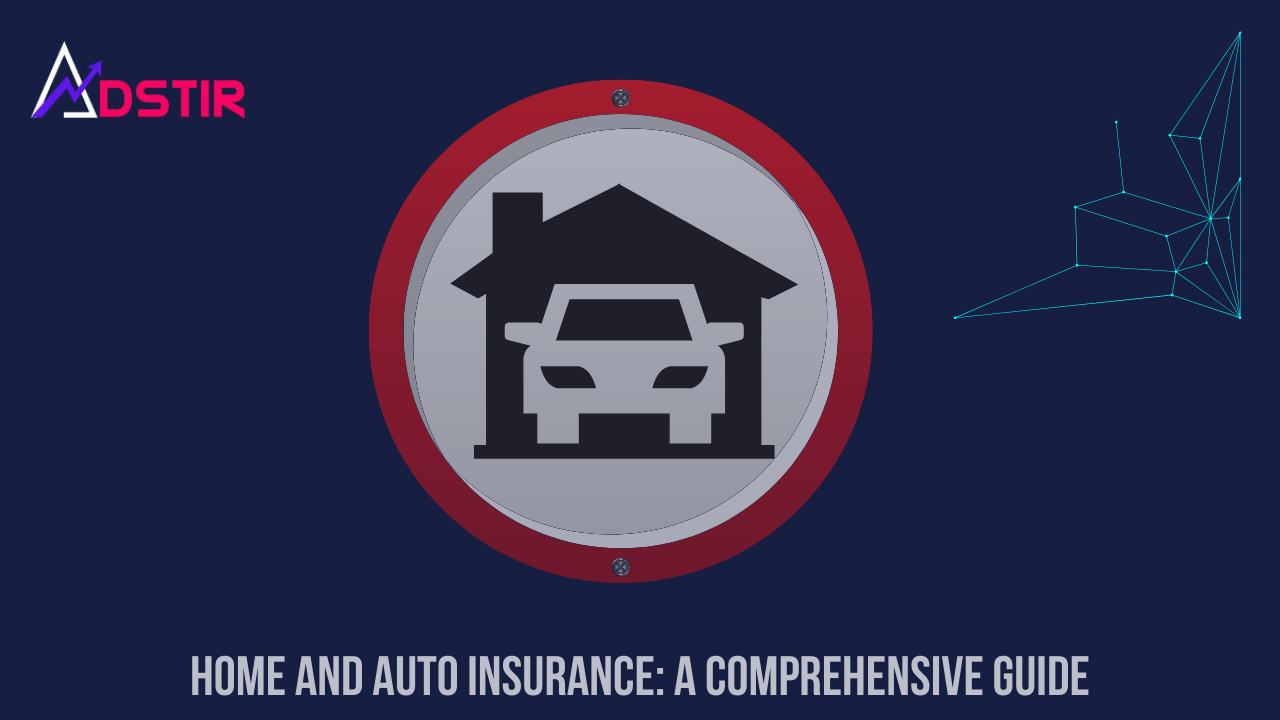Home and Auto Insurance: A Comprehensive Guide – Home and auto insurance are important because they help protect people from financial loss. Home insurance covers damages to your house and belongings caused by events like fires, storms, or theft. Auto insurance protects you in case of car accidents, theft, or damage to your vehicle. Both types of insurance provide security and peace of mind, ensuring that you don’t have to pay large amounts of money when unexpected problems occur.
Many insurance companies offer the option to bundle home and auto insurance, which can help you save money and make managing your policies easier. Choosing the right insurance requires understanding different coverage options, costs, and benefits. The right policy ensures that you have enough protection without overpaying.
This guide will explain how home and auto insurance work, why they are important, and how to find the best policy for your needs. With the right knowledge, you can make a smart decision and secure your future.
Understanding Home Insurance
Home insurance, also known as homeowners insurance, protects your home and personal belongings from various risks. It typically covers:
- Dwelling coverage – Pays for repairs or rebuilding if your home is damaged by fire, storms, or other covered events.
- Personal property coverage – Covers loss or damage to furniture, electronics, and other belongings due to theft or disasters.
- Liability protection – Helps pay for legal costs if someone is injured on your property.
- Additional living expenses (ALE) – Covers temporary housing costs if your home becomes unlivable due to covered damages.
Types of Home and Auto Insurance
There are different types of homeowners insurance policies, depending on the type of home and level of coverage needed:
- HO-1 (Basic Form) – Covers a limited number of risks such as fire, vandalism, and theft.HO-2 (Broad Form) – Includes additional protection, such as damage from falling objects and water damage from plumbing issues.
- HO-3 (Special Form) – The most common policy, covering all risks except those specifically excluded.
- HO-4 (Renters Insurance) – Designed for tenants, covering personal belongings and liability but not the building.
- HO-5 (Comprehensive Form) – Offers the highest level of coverage, protecting against most risks.
- HO-6 (Condo Insurance) – Provides coverage for condo owners, including personal property and liability.
- HO-8 (Older Home Insurance) – Tailored for older homes where rebuilding costs may be higher than market value.
Understanding Auto Insurance
Auto insurance provides financial protection in case of accidents, theft, or damage to your vehicle. Most states require drivers to carry at least a minimum amount of auto insurance. The main types of coverage include:
- Liability coverage – Pays for damages and injuries you cause to others in an accident.
- Collision coverage – Covers the cost of repairing or replacing your vehicle after an accident.
- Comprehensive coverage – Protects against non-collision-related damages such as theft, vandalism, and natural disasters.
- Personal injury protection (PIP) – Covers medical expenses for you and your passengers, regardless of fault.
- Uninsured/underinsured motorist coverage – Provides protection if you’re in an accident caused by a driver without sufficient insurance.
Also Read: Youi Insurance A Comprehensive Guide
Factors influence
Several factors influence the cost of home and auto insurance, including:
- Location – Homes and cars in high-risk areas (e.g., prone to natural disasters or high crime rates) have higher premiums.
- Home and vehicle value – More expensive homes and cars cost more to insure.
- Credit score – Many insurers use credit history to determine premiums. A higher credit score can lead to lower rates.
- Claims history – Frequent claims may increase premiums.
- Deductible amount – Choosing a higher deductible lowers premiums but increases out-of-pocket costs for claims.
- Safety features – Security systems in homes and anti-theft devices in cars can reduce insurance costs.
- Driving history – Safe drivers with no accidents or traffic violations receive lower auto insurance rates.
Benefits of Home and Auto Insurance
Many insurance companies offer discounts for bundling home and auto policies. Benefits of bundling include:
- Cost savings – Insurers provide discounts for customers who purchase multiple policies.
- Simplified management – Having one provider for both policies makes it easier to manage payments and claims.
- Improved coverage options – Some companies offer additional benefits, such as deductible reductions, for bundled policies.
How to select the Right Home and Auto Insurance
When selecting home and auto insurance, consider the following tips:
- Assess your coverage needs – Determine how much coverage is necessary based on the value of your home, belongings, and car.
- Compare quotes – Get quotes from multiple insurers to find the best rates and coverage.
- Check policy exclusions – Understand what is not covered by your policy to avoid surprises later.
- Look for discounts – Many insurers offer discounts for bundling, safe driving, home security systems, and loyalty programs.
- Read customer reviews – Research the insurer’s reputation for customer service and claims processing.
- Work with an agent – An insurance agent can help you find the best policy based on your needs and budget.
Filing a Claim: What You Need to Know
In case of an accident or damage, follow these steps to file a claim:
- Contact your insurance provider as soon as possible.
- Take photos and gather evidence to support your claim.
- Submit the required information, including police reports, receipts, and witness statements.
- The insurer will assign an adjuster to assess the damage and determine the payout.
- Once the claim is approved, you’ll receive payment for repairs or replacements.
Conclusion
Home and auto insurance are essential for protecting your most valuable assets—your home and vehicle. They provide financial security against unexpected events like accidents, natural disasters, or theft.
Read More: Simply Business Insurance: A Complete Guide
